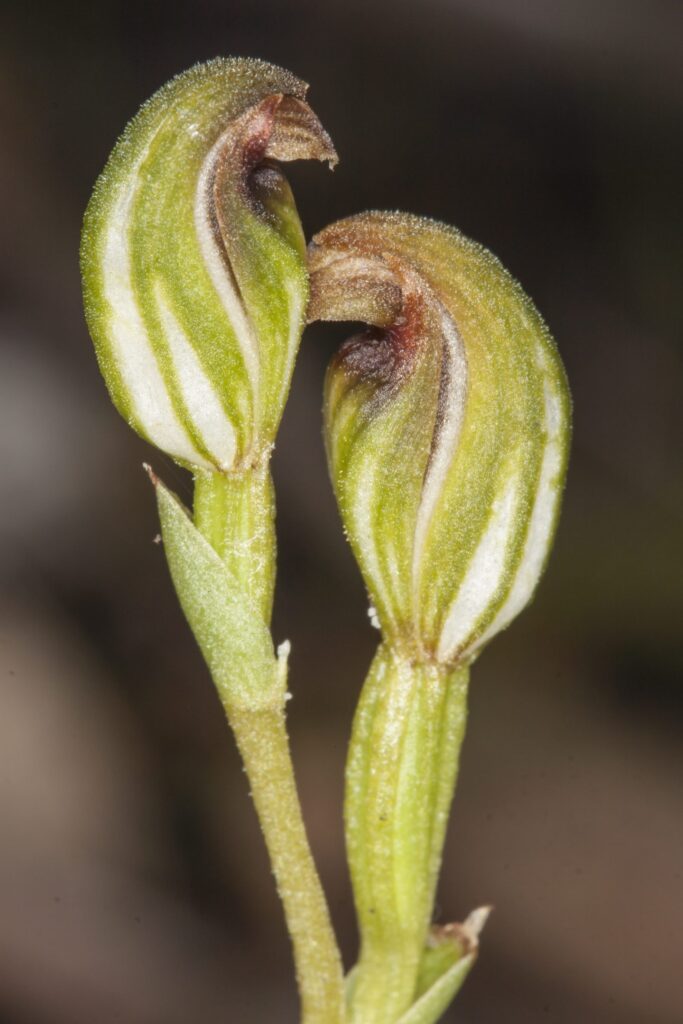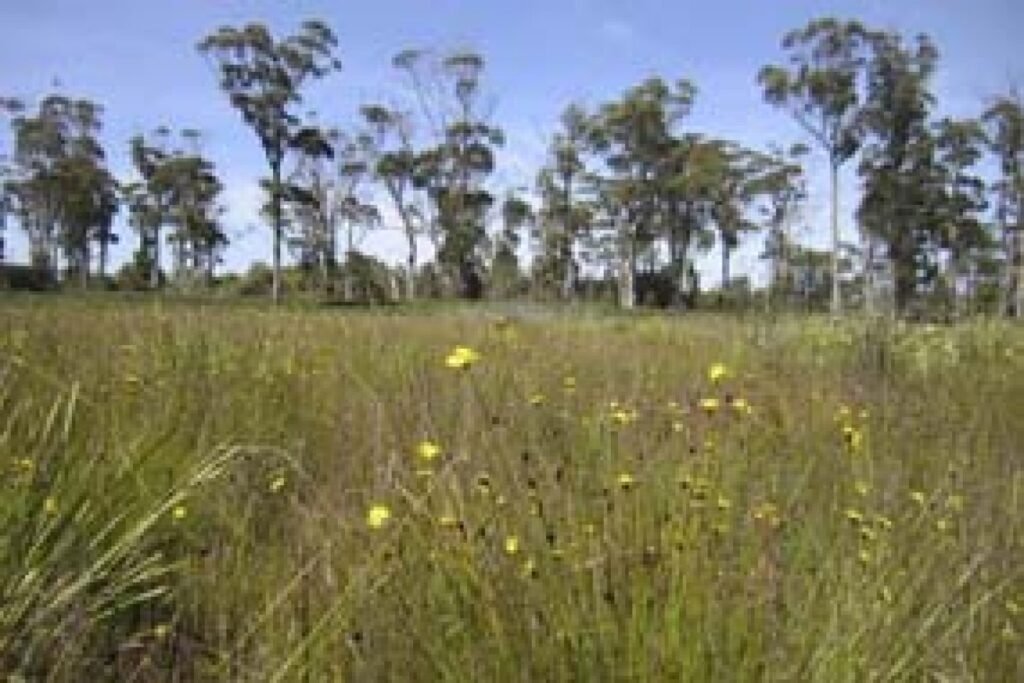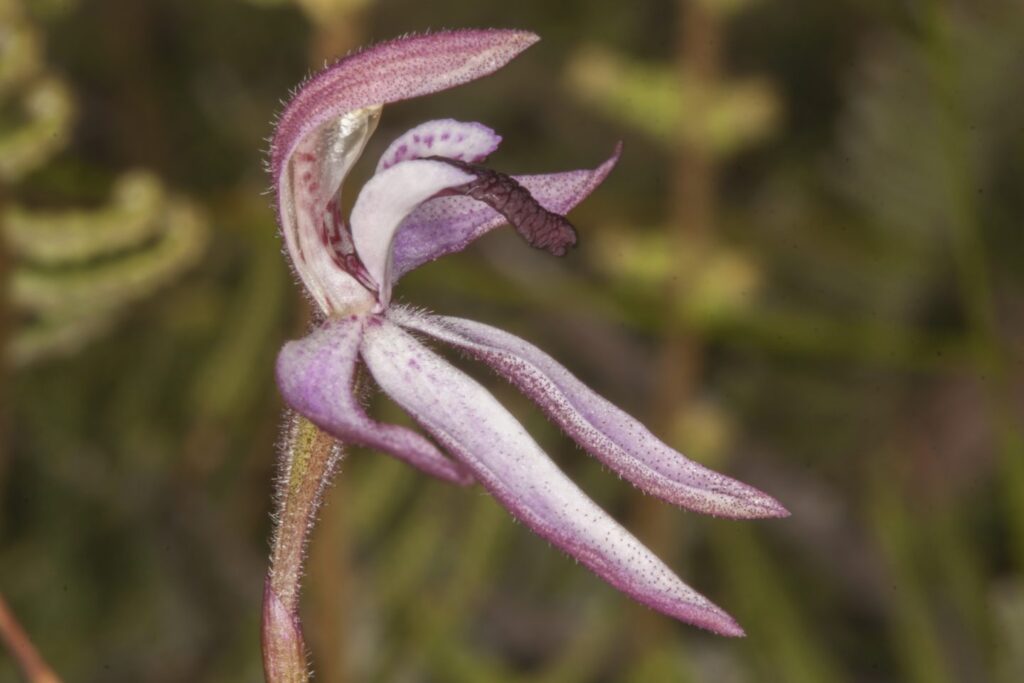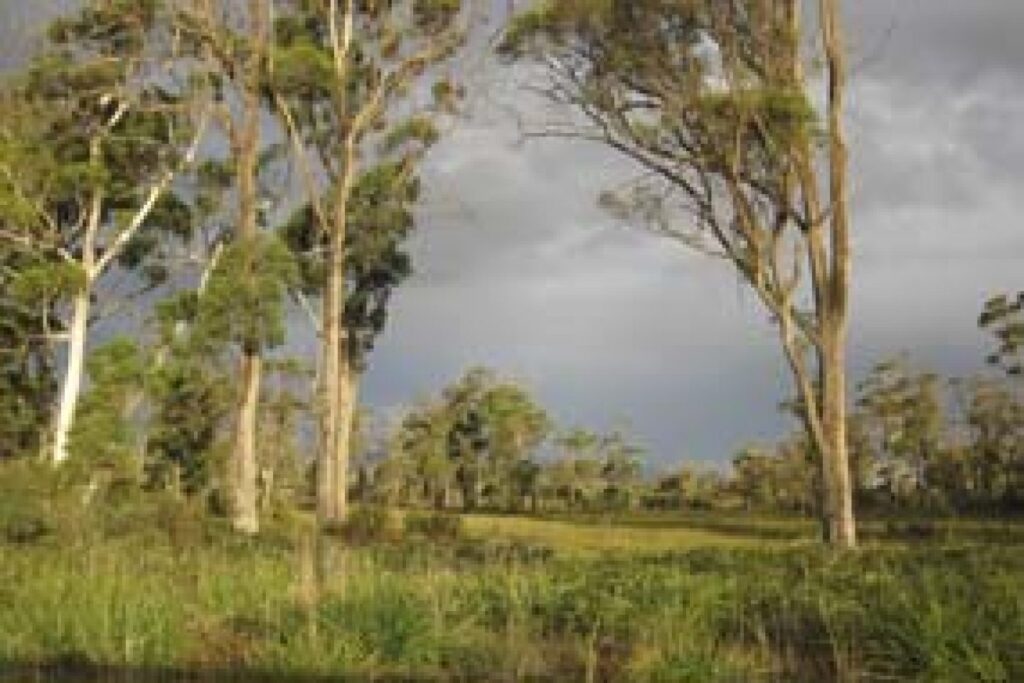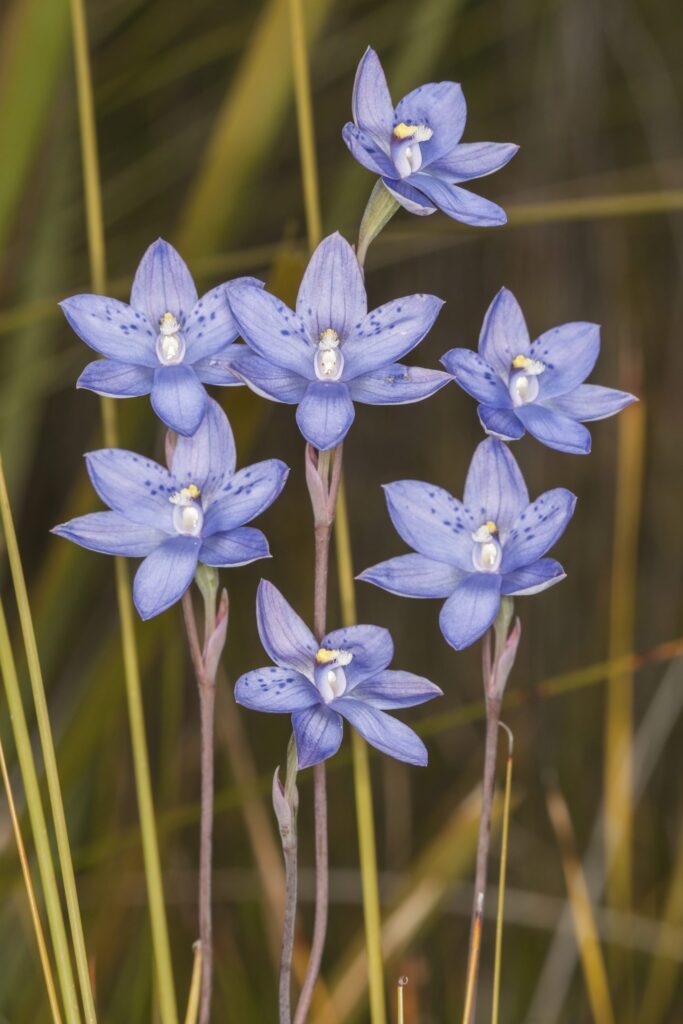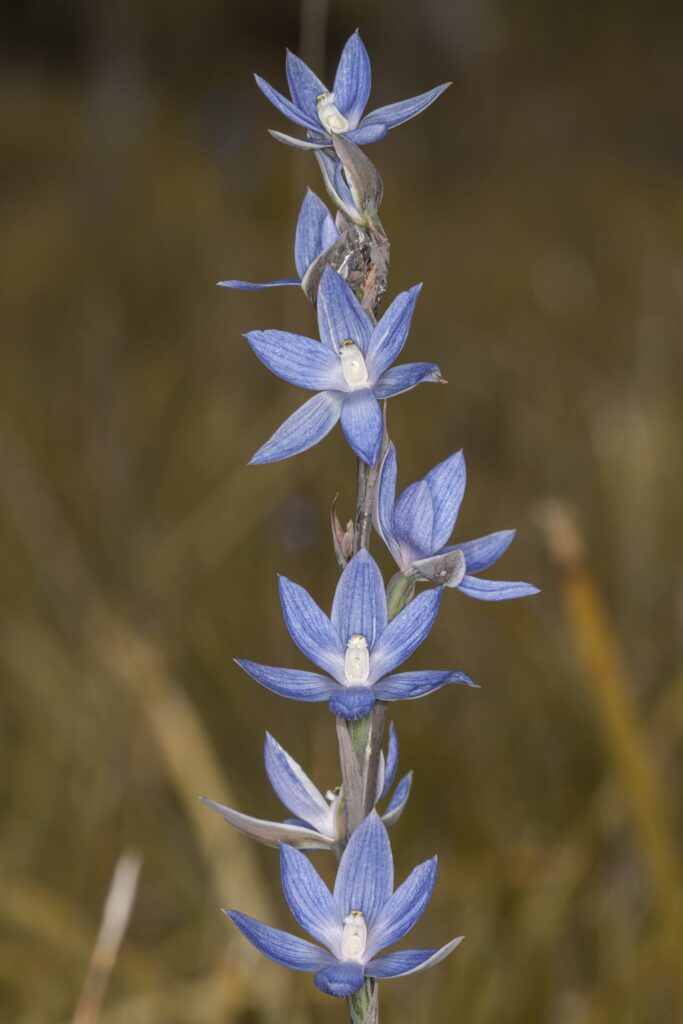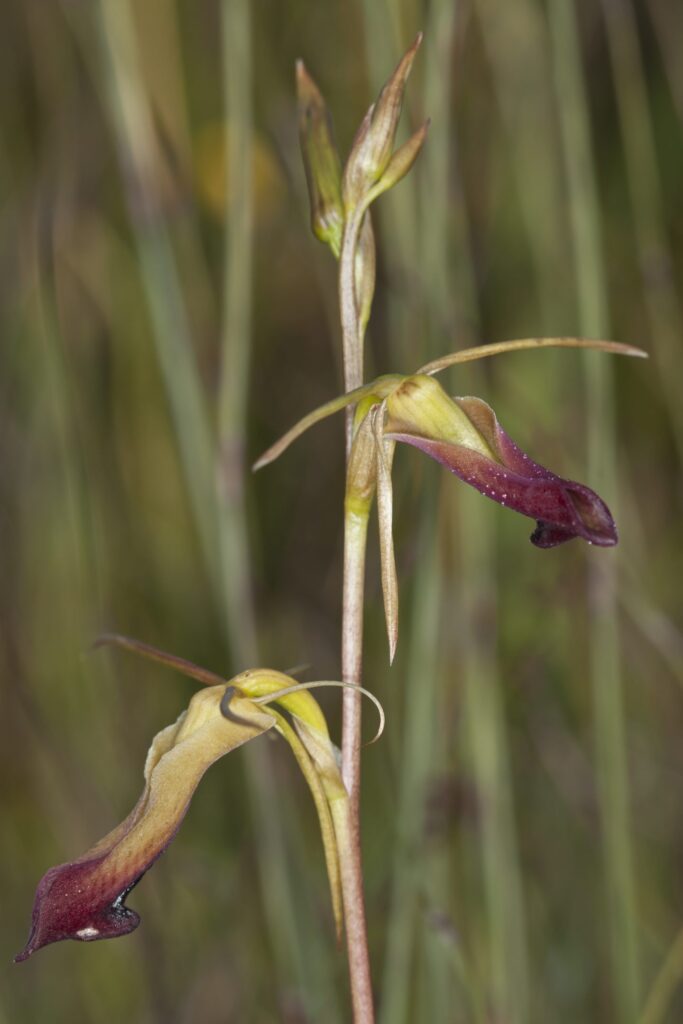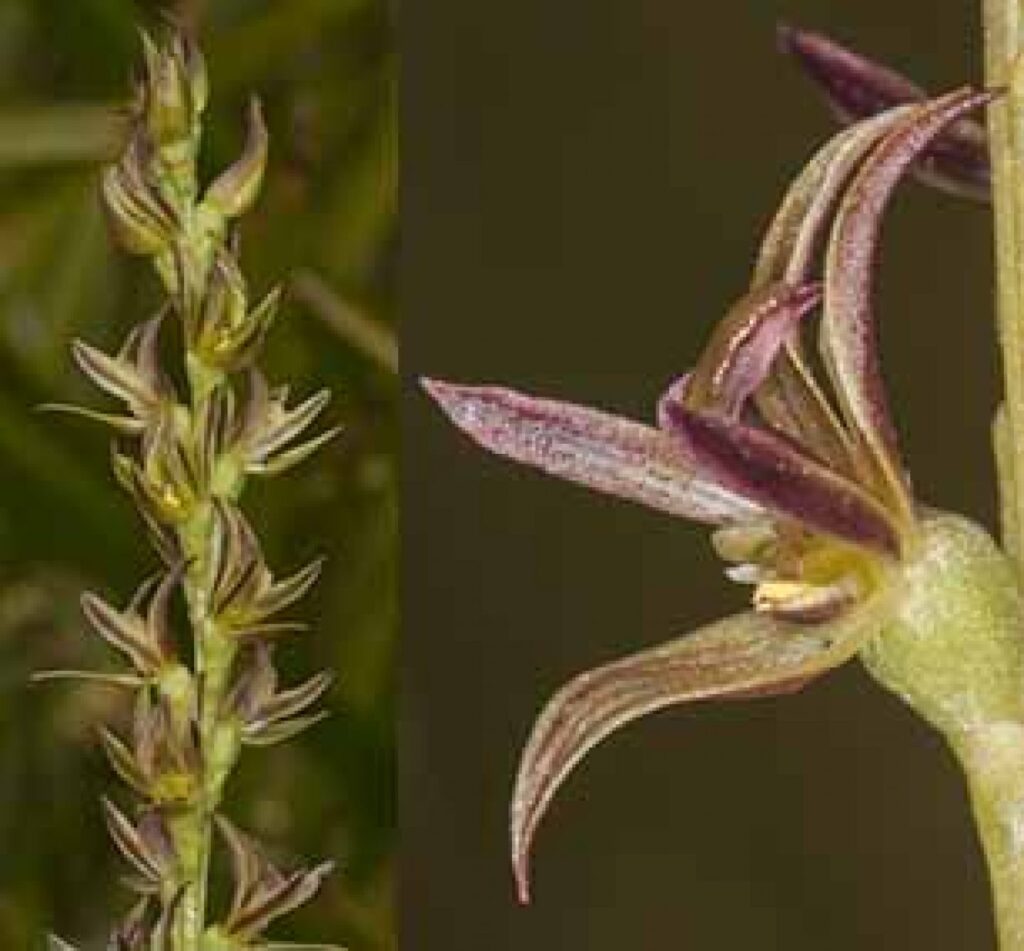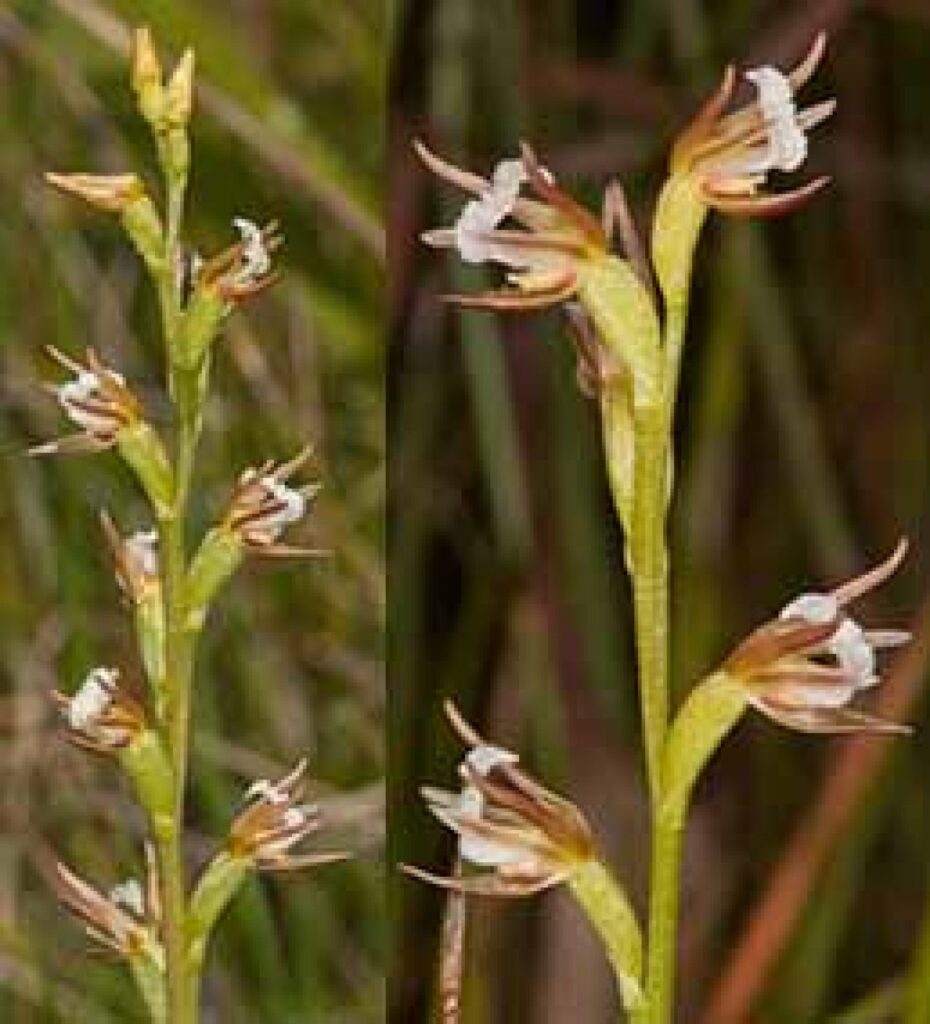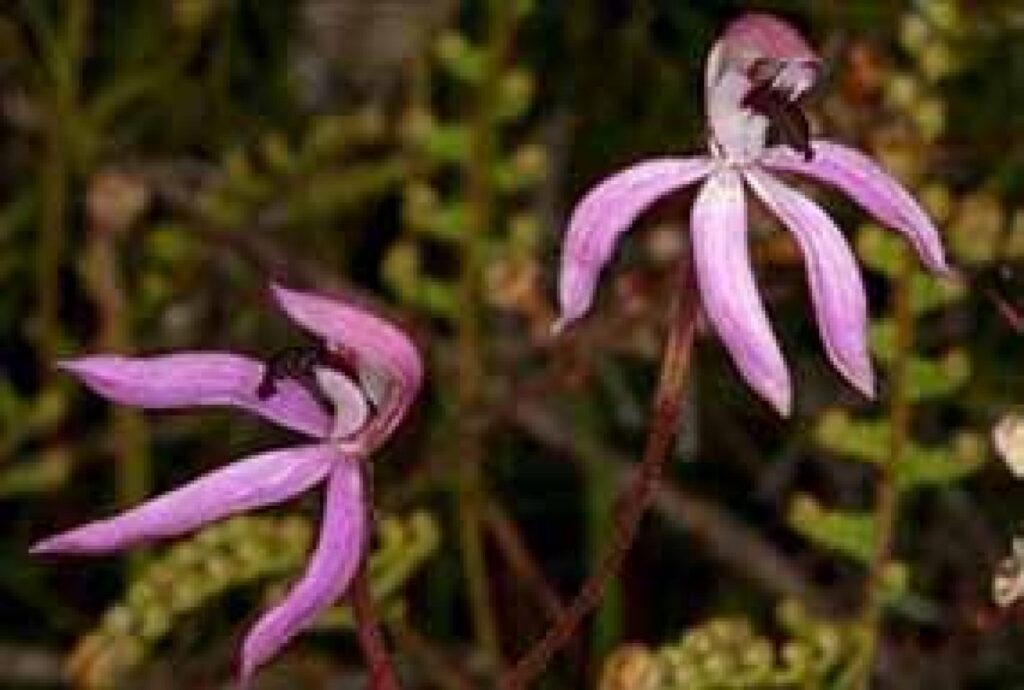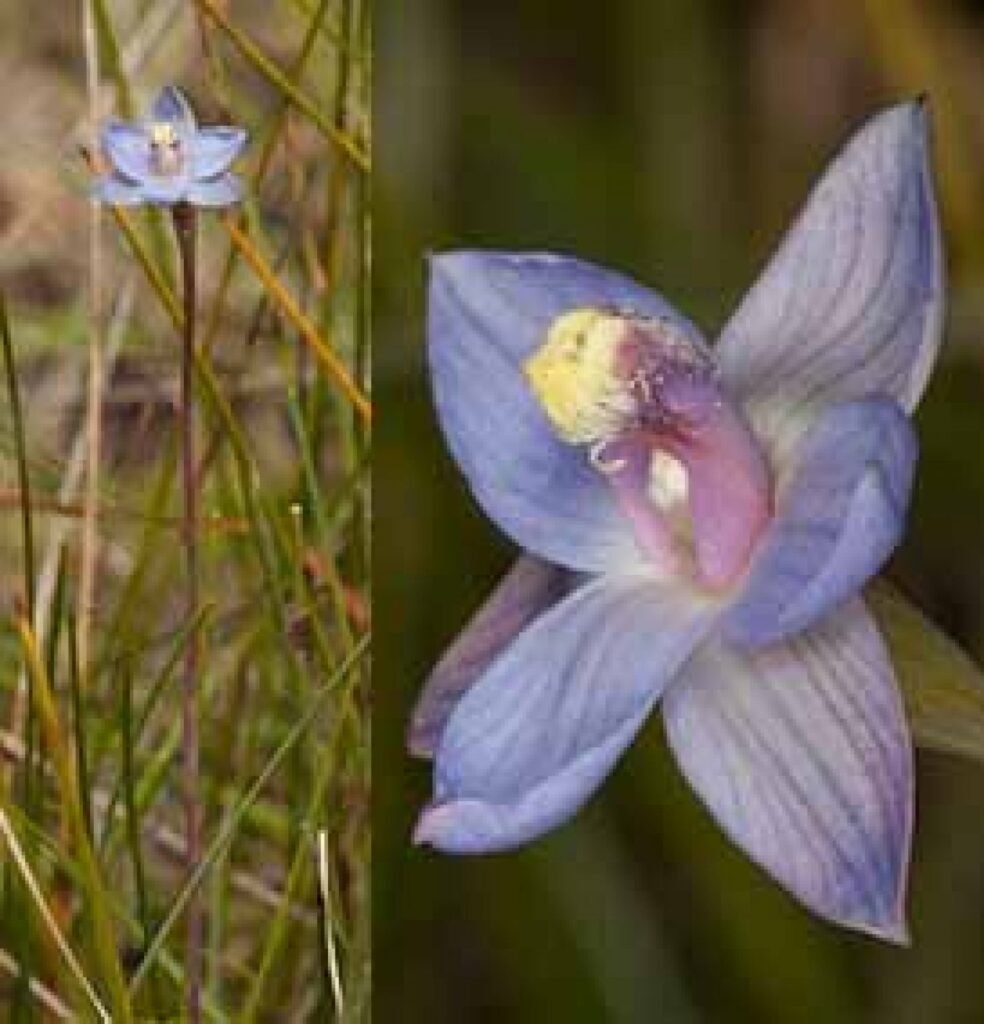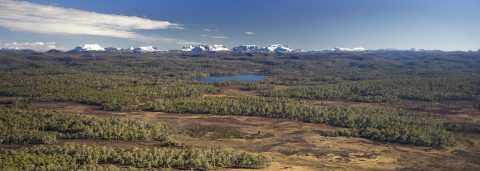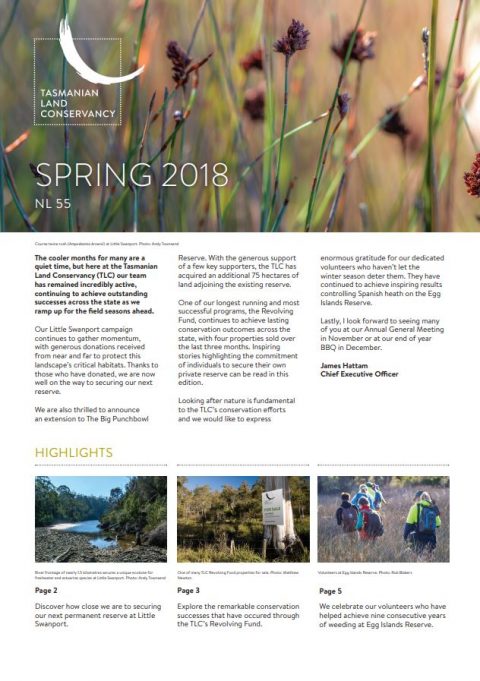NATURAL VALUES AND CONTEXT
Rubicon Sanctuary is a rare 20-hectare remnant of natural coastal vegetation in the central north coast of Tasmania. The property consists of several habitats, including ephemeral wetlands, that are home to remarkable biodiversity featuring approximately 12 threatened plant species (including seven threatened orchid species), one threatened plant community (Eucalyptus ovata woodland) and the threatened north-coast burrowing crayfish (Engaeus granulatus).
The uniqueness of Rubicon is captured by its amazing orchid diversity, hosting approximately 60 species, many being found only here or in a small number of locations. Rubicon Sanctuary is important for the conservation of the marsh leek-orchid (Prasophyllum limnetes), pretty leek orchid (Prasophyllum pulchellum), black tongue finger orchid (Caladenia congesta), plum sun orchid (Thelymitra mucida) and Holmes sun orchid (Thelymitra holmesii), all listed on state and federal threatened species legislation, some as critically endangered. These orchids thrive due to Rubicon’s long-standing management regime, which includes targeted slashing, ecological burning and caging for protection against browsing species. Other threatened plants – such as the wrinkled dollybush (Cassinia rugata), swamp wallaby grass (Amphibromus neesii) and star clubsedge (Isolepis stellate) – also benefit from this intensive management and continue to flourish on the property.
MANAGING RUBICON SANCTUARY
Rubicon Sanctuary supports two main vegetation types: low-lying open swampy areas, and better-drained woodlands. The property’s conservation values have been managed carefully over the last decade through slashing, burning and weeding – often on three yearly and five-yearly rotation. For example, orchids growing in swampy places require periodic high-intensity fire to create an opportunity for them to flower and fruit before the other vegetation re-grows. Disturbance is alternated with rest in a network of carefully regulated and monitored small burn patches. Property management also involves track maintenance and vegetation management to protect built assets. Weeds are controlled in priority habitats and around the boundaries when time permits; and strict bio-security and hygiene protocols are in place to prevent Phytophthora or new weeds becoming established.
THE RUBICON STORY
A decade ago Phil Collier and Robin Garnett were the first to invest in TLC’s Revolving Fund when they purchased Rubicon Sanctuary, then called Dorothy Reeves Reserve. What followed set a remarkable example of backyard nature conservation globally, and after years of dedication, Phil and Robin made the exceptionally powerful decision to act on what was already in their will and gift their beloved Rubicon back to the TLC. Read the entire Rubicon story in our Newsletter 55: Spring 2018.
Banner image: supplied by Phil Collier and Robin Garnett
